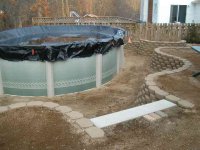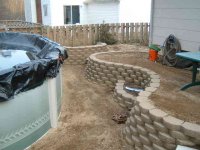besserheimerpha
New member
I am putting in a retaining wall and concrete paver patio this summer to replace what was lost after installing a septic system and a tearing out a neglected slab patio. I'm also installing some drainage to alleviate some of the problems that lead to the previous problems.
Does anyone have any tips, tricks or pointers before I get started on this in the coming weeks? This will be my first retaining wall, possibly with many more to come depending on how this experience goes. Also my first time laying pavers. Any help would be appreciated.
Thanks,
John
Does anyone have any tips, tricks or pointers before I get started on this in the coming weeks? This will be my first retaining wall, possibly with many more to come depending on how this experience goes. Also my first time laying pavers. Any help would be appreciated.
Thanks,
John

